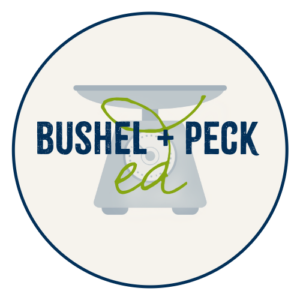A homeschool style is essentially a framework or approach to learning that guides your child’s education. It’s important to remember that these styles aren’t rigid rules; they’re flexible guidelines that can be adapted to suit your family’s specific needs and preferences. In fact, many families oscillate between several or mash them up. They may do a traditional boxed math curriculum, but Classical history and writing, while unschooling on interests that are outside of the traditional education classes.
Honing your method opens a world of possibilities. It allows you to tailor your child’s education to their unique needs and interests, as well as your family’s vibe. But with so many different homeschool styles available, it can be overwhelming to choose the right one. In this comprehensive guide, we’ll explore the most popular homeschool styles, their key features, and how to determine the best fit for your family.
Explore Homeschool Styles
1. Traditional (School-at-Home)
Homeschooling offers a unique and flexible way to educate your children. However, most parents who are first putting on the “teacher hat” come from a traditional education. Often this leads to a popular beginner approach of emulating a traditional school. Sometimes referred to as School-at-Home. This method mimics the structure of a traditional classroom, with set schedules, textbooks, and assigned work. Parents often create daily lesson plans, covering subjects like math, science, language arts, and history. While this style requires more planning and structure, it can provide a familiar learning environment for children who thrive in a traditional setting and parents who are comfortable with the methodology.
Pros:
- Structure and Routine
- Familiar Learning Environment
- Clear Expectations
- High Parental Involvement
Cons:
- Rigid Schedule
- Increased Parental Burden
- Limited Social Interaction
- Potential for Burnout
2. Classical Education
Classical homeschooling is inspired by the traditional trivium and quadrivium education models. Many of our Bushel + Peck Ed resources are a perfect accompaniment to a Classical education. In the same manner, we focus on critical thinking, problem-solving, and effective communication skills in conjunction with exploring the beauty and wonder of the world through beautiful artwork and literature.
This homeschool style focuses on training the mind through three stages: grammar, logic, and rhetoric. In the grammar stage, children learn foundational knowledge through memorization and recitation. The logic stage emphasizes critical thinking and analysis, while the rhetoric stage focuses on effective communication and persuasive writing. This method aims to cultivate well-rounded individuals with a strong foundation in the liberal arts and a love of learning. Finding a Classical co-op or hybrid school can be easier than many other methods. Further there are a lot of great resources. Our favorite place to start for this method is a book by Susan Wise Bauer called The Well-Trained Mind.
Pros:
- Well-Rounded Education
- Strong Foundation in the Liberal Arts
- Cultivates a Love of Learning
- Character Development
Cons:
- Rigorous Curriculum
- Limited Flexibility for Certain Learning Styles
- Potential for Overemphasis on Traditional Subjects
- Requires Dedicated Parents
3. Charlotte Mason
Another style that pairs well with our resources is the Charlotte Mason method. Homeschoolers using this method enjoy a unique approach that emphasizes living books, narration, and nature study. Rather than relying on textbooks, this method encourages children to read high-quality literature, discuss what they’ve read, and express their understanding through narration. Nature study is a key component, as children learn about the natural world through firsthand observation and experience. Further, this method aims to cultivate a love of learning, critical thinking skills, and a strong moral compass.
Pros:
- Fosters a Life-long Love of Learning
- Encourages Critical Thinking
- Well-Rounded Education
- Child-Led Learning with Parental Involvement
Cons:
- Requires Significant Parental Involvement/ Potential for Overwhelm
- Can Be Time-Consuming
- May Require Additional Resources
- Less Structure
4. Montessori Education
Montessori homeschooling is a child-led approach that emphasizes independent learning and exploration. This method provides a carefully prepared learning environment with a variety of hands-on materials designed to stimulate children’s natural curiosity. (We have many prepared resources to aid with this!) Children are encouraged to work at their own pace and choose activities that interest them. Montessori education focuses on developing practical life skills, sensory learning, language arts, mathematics, and cultural studies. This approach aims to foster a love of learning, creativity, and a sense of self-reliance.
Pros:
- Child-Centered Learning
- Hands-On Learning
- Fosters Independence and Self-Discipline
- High Focus on Social Skills
Cons:
- Requires a Prepared Environment
- Parental Involvement
- Potential for Overemphasis on Independent Learning
- May Not Suit All Learning Styles
5. Unit Studies
Unit studies offer a flexible and engaging approach to homeschooling. This method involves diving deep into a specific topic or theme, such as ancient Egypt, the American Revolution, or marine biology. By exploring a subject from multiple angles, children can develop a comprehensive understanding. Unit studies often incorporate a variety of learning activities, including reading, writing, art, science experiments, and field trips. This approach can spark curiosity, foster creativity, and make learning fun and memorable. Not sure what it looks like? Here is an example of how to turn any book into a unit study.
Pros:
- Engaging and Thematic Learning
- Flexible and Customizable
- Real-World Learning
- Encourages Creativity
Cons:
- Can Be Time-Consuming
- May Require Additional Resources
- Potential for Overwhelm
- May Not Cover All Subjects
6. Waldorf
Waldorf homeschooling is an educational approach that emphasizes imagination, creativity, and a holistic development of the child. It focuses on nurturing the whole child, including their physical, emotional, and intellectual needs. Waldorf education often involves storytelling, art, music, and practical skills. Children are encouraged to learn through play and hands-on experiences, rather than traditional textbooks. This method aims to cultivate well-rounded individuals with a strong sense of self and a deep connection to the natural world.
Pros:
- Holistic Development
- Creative Expression
- Strong Sense of Community
- Practical Skills
Cons:
- Academics are Done in a Specific Non-Traditional Manner
- Requires Dedicated Parents
- Can Be Expensive
- May Not Suit All Learning Styles
7. Eclectic Homeschooling
Eclectic homeschooling is a flexible approach that combines elements from different homeschooling methods. Rather than sticking to a single philosophy or curriculum, eclectic homeschoolers pick and choose what works best for their family and child. This allows for a personalized learning experience that can adapt to your child’s unique needs and interests. You might use a structured curriculum for core subjects like math and language arts, while incorporating hands-on learning activities, field trips, and creative projects for other subjects. Eclectic homeschooling offers a lot of freedom and creativity, allowing you to tailor your child’s education to their individual learning style. Without question, our resources fit seamlessly into this homeschool style.
Pros:
- Flexibility
- Personalized Learning
- Reduced Boredom
- Real-World Learning
Cons:
- Requires Organization and Planning
- Potential for Inconsistency
- May Require More Parental Involvement
- Can Be Challenging to Evaluate Progress
8. Unschooling
Unschooling is a child-led approach to education that emphasizes learning through natural curiosity and exploration. Rather than following a structured curriculum, unschooling allows children to learn at their own pace and pursue their interests. Parents provide opportunities for learning, such as field trips, books, and activities, but ultimately the child decides what and how they want to learn. Unschooling can look very different from traditional schooling, but it can foster a love of learning, creativity, and critical thinking skills.
Pros:
- Child-Led Learning
- Fosters Creativity and Innovation
- Strong Self-Motivation
- Real-World Learning
Cons:
- Requires Very Dedicated Parents/ Can Become Expensive
- Limited Structure
- Academic Challenges/ Lack of Readiness for Traditional Assessments
- Difficulty Assessing Progress
Choose the Right Homeschool Style
To determine the best homeschool style for your family, consider the following factors:
- Your Child’s Learning Style: Focus less on being a visual, auditory, or kinesthetic learner. Emerging research shows most people are a blend of multiple styles and using many methods helps to reinforce concepts. Instead, choose a homeschool style that fits your child’s personality and strengths.
- Your Child’s Interests: Like learning styles do not be afraid to combine homeschool styles. Consider your child’s passions and tailor your homeschool to capture those interests.
- Your Family’s Lifestyle: Your family on a holistic level is one of the most important factors when leaning into a homeschool style. Choose a style that fits your family’s schedule and lifestyle. For example, if you do not have time to spend creating and teaching choosing a Waldorf method would be extremely difficult to take on. If you are juggling a large family, then a structured curriculum might be very stressful, instead find methods that allow you to learn various subjects together but at different depths.
- Your Parenting Philosophy: Your homeschool must be aligned with your values and beliefs or why try to force it just because it comes in a nice package? Similarly, if you are co-parenting make sure you are following a philosophy both parents are on board with.
The beauty of homeschooling is that you have the freedom to choose the style that best suits your family’s unique needs and preferences. By understanding the different homeschool styles and considering your child’s individual learning style and interests, you can create a personalized education that empowers your child to reach their full potential.
Remember, the most important thing is to foster a love of learning and create a positive and supportive learning environment.



